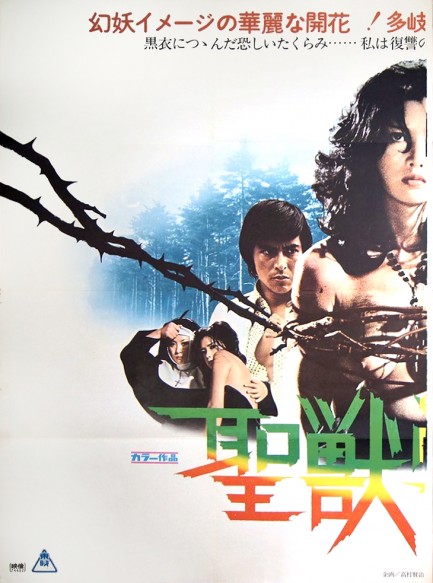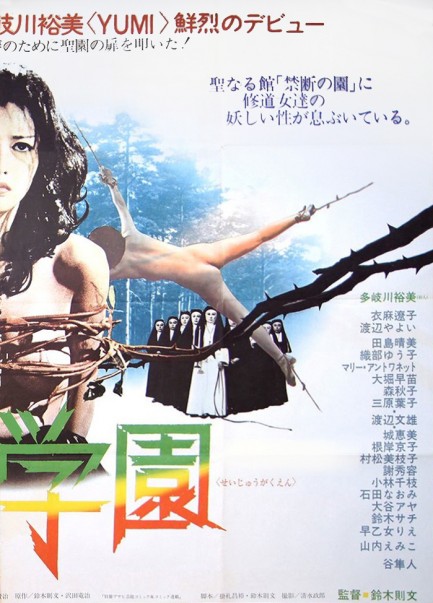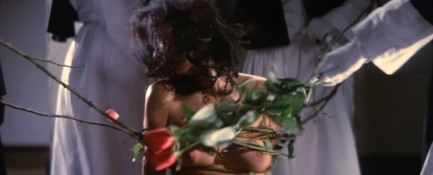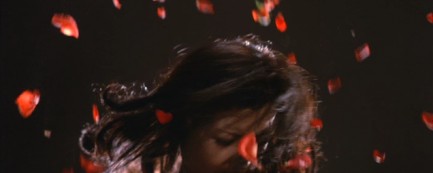 Black don't crack a smile. 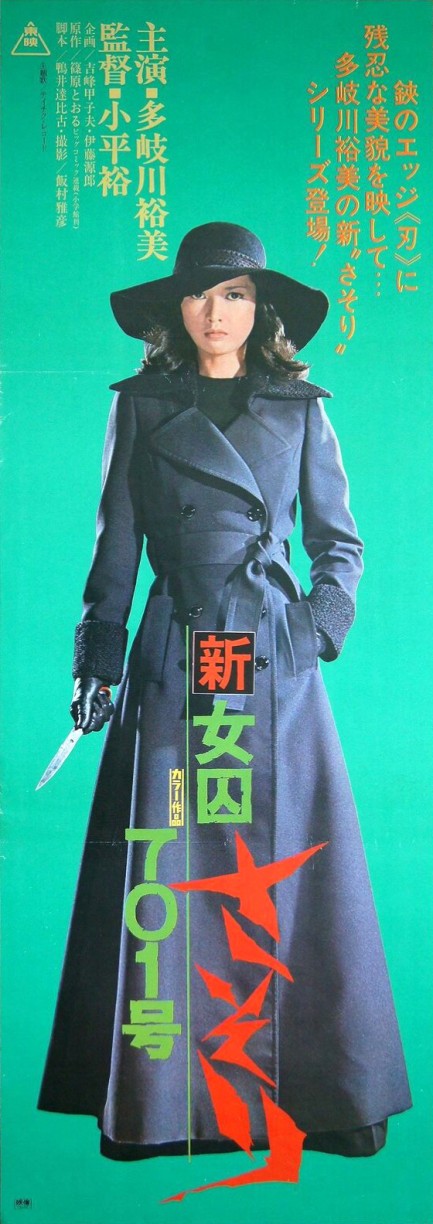
Above is a second excellent tateken poster for Shin joshuu sasori: 701-gô, known in English as New Female Prisoner Scorpion: 701, with Yumi Takigawa dressed in black from head to toe and looking ready to deal out death. These tateken style promos are rare, so we're happy to have found two. As usual, we like to share posters on a film's premiere date, and that was today in 1976.
 New main ingredient, same old Female Prisoner Scorpion. 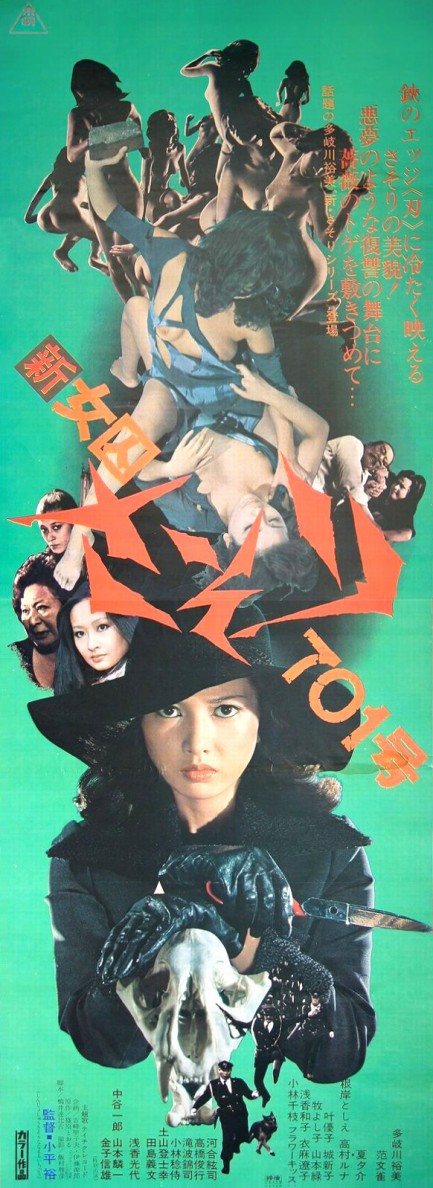
We've already shared two posters for Yumi Takigawa's women-in-prison pinky violence flick Shin joshuu sasori: 701-gô, aka New Female Prisoner Scorpion: 701, which premiered today in 1976. Above is the slightly different tateken sized poster, added here for the sake of completeness. The film is a reboot of the original Female Prisoner Scorpion series starring Meiko Kaji, and most consider it to be of lesser quality than the first four films, but quality is a relative term in pinku. Some would say all the films are bad. Not us. But some would say that. Bonus material: a Yumi promo image below. And you can see the other posters here and here.
 Yumi Yumi Yumi puts her knife in your tummy. 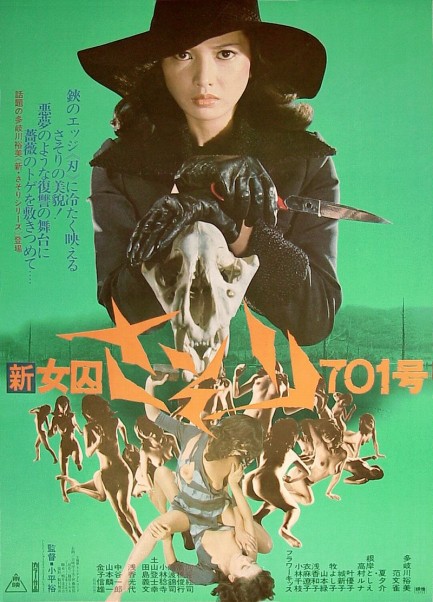 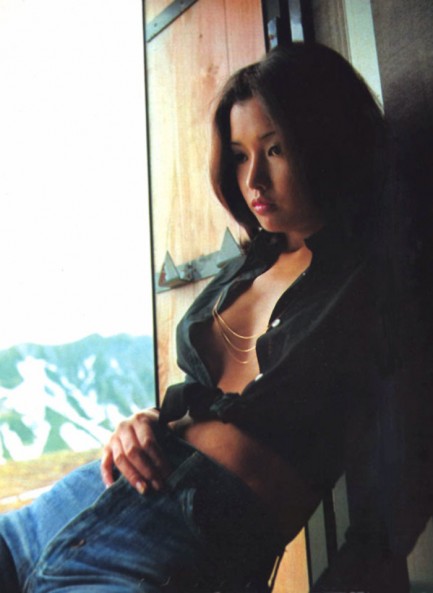
A couple a years ago we wrote briefly about and shared a poster for the Yumi Takigawa headlined pinku flick Shin joshuu sasori: 701-gô, aka New Female Prisoner Scorpion: 701. Above is another poster from the film, actually the standard poster, as opposed to the bo-ekibari, or horizontal two-piece we showed you before. It's a great image, as is the very Yumi shot of Takigawa accompanying it. See the other poster here.
 Someone’s going to pay for what happened—in full, plus interest. 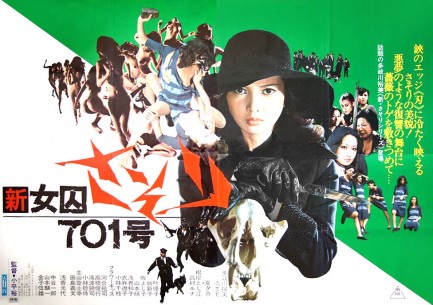
This poster for Shin joshuu sasori: 701-gô, aka New Female Prisoner Scorpion: 701 promotes the first film in what today might be called a franchise reboot. Meiko Kaji established the character of Prisoner 701 in four hit films, and a few years after she left Toei Company decided to resurrect the series with Yumi Takigawa in the lead. Framed for murder, she ends up in a women’s prison where she’s harassed, sexually assaulted, and marked for death. A prison riot finally gives her the chance at revenge, and let's just say she takes full advantage. She feels even less forgiving once she escapes, meaning she has a score to settle with the men who railroaded her in the first place. You know what to expect, so we don’t really need to go into detail. The poster above is an ekibari, which we gather means it was made for subway walls, and it’s in bo style, which seemingly means two pieces. Below we have the bo-ekibari in its separate, very cool sections, with Takigawa giving the stare of death that’s usually the last thing her enemies see. Shin joshuu sasori: 701-gô premiered in Japan today in 1976. 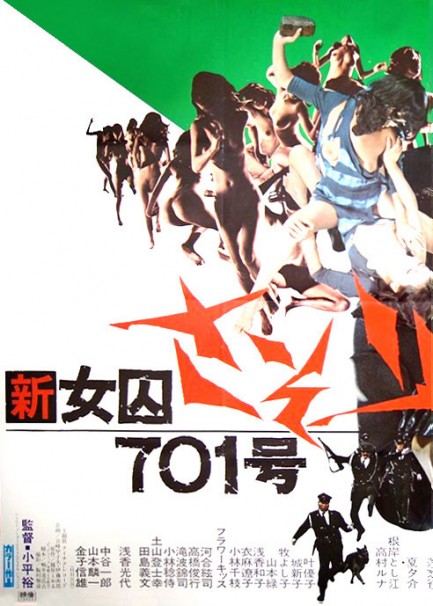 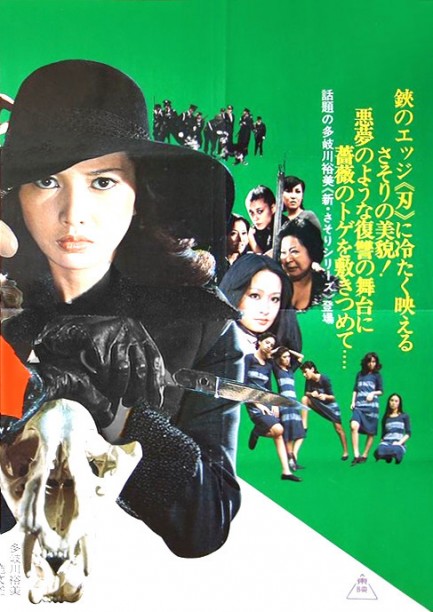
 Who said life couldn’t be a bed of roses? 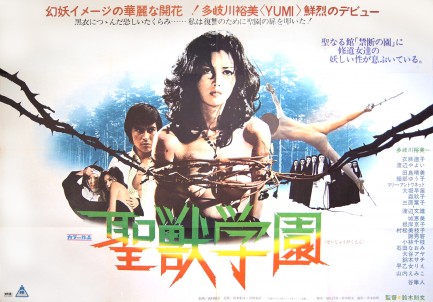
Way back in 2009 two promos for Seijû gakuen were the first pinku posters we ever shared on Pulp Intl. Ah, the good old days. We got the title wrong and misspelled the name of the star, but other than that, what a glorious memory. When we located that pair of posters we also found two others, and now, years later, we’re getting around to sharing those too. Seijû gakuen was known in the West as School of the Holy Beast, and above you see a rare two panel horizontal poster. At that orientation it renders a little small here, so we’ve posted the panels seperately below:
The second poster we wanted to share is a somewhat less colorful effort, but still quite nice, with a splash of rose pink in the middle. You see that below:
In addition to starring Yumi Takigawa, Seijû gakuen had Emiko Yamauchi and Pulp fave Yayoi Watanabe, and as we mentioned in the previous post, it’s nunsploitation from Toei Studios. As you no doubt have deduced, Takigawa goes through all kind of indignities, and at one point is bound with vines and whipped across her naked torso by two nuns using bouquets of roses (and, more importantly, their thorns). It’s a bizarre and bloody but beautifully shot spectacle.
Lastly, just below, we’ve decided to share a promo image of Yumi Takigawa looking her radiant best. She spends a good portion of the movie wearing a nun’s habit that covers everything except her face. If Toei and director Norifumi Suzuki wanted a lead actress whose face could be isolated in that manner yet still hold an audience’s attention they succeeded. Seijû gakuen was Takigawa’s first film but not her last—she’s still quite busy as an actress, appearing mainly on television. Seijû gakuen premiered today in 1974. 
 Nun flew over the cuckoo's nest. 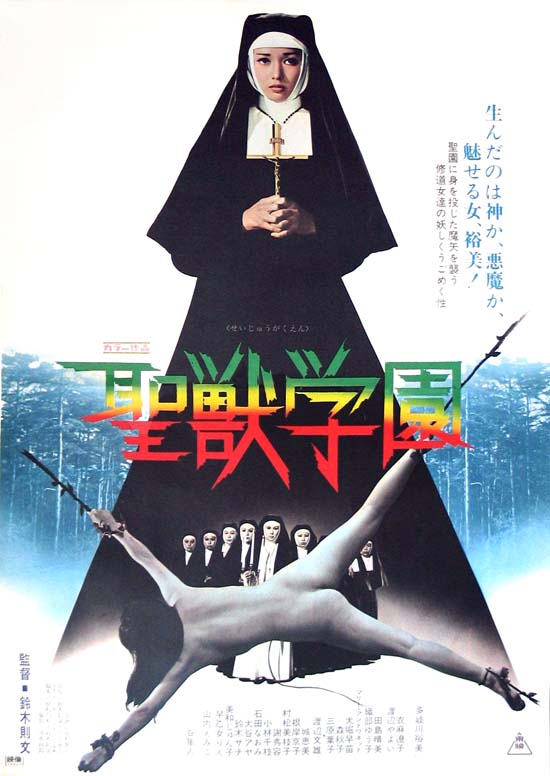
If you haven’t seen a nunsploitation flick you really haven’t lived. Norifumi Suzuki’s shlock masterpiece Seijû gakuen, aka School of the Holy Beast, has a little bit of everything, including blood, whippings, copious nudity, and lots of tender lesbian love. The beautiful Yumi Takigawa plays a woman who enters a convent in order to learn why her mother died there eighteen years earlier. Surprise surprise, she finds herself trapped in a den of depravity that would make de Sade blanch. When nuns go bad, they go real bad. But blasphemy never looked so gorgeous. And neither have the movie's posters. The version above is the standard one, hard to find but not impossible. Below is the two panel version, and it's exceedingly rare. Seijû gakuen opened in Japan today in 1972.
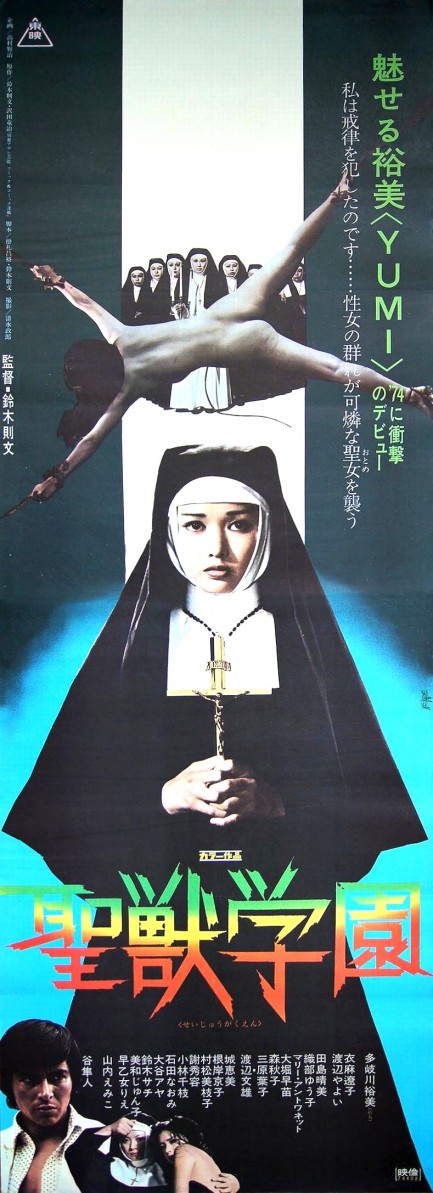
|
 |

The headlines that mattered yesteryear.
2003—Hope Dies
Film legend Bob Hope dies of pneumonia two months after celebrating his 100th birthday. 1945—Churchill Given the Sack
In spite of admiring Winston Churchill as a great wartime leader, Britons elect
Clement Attlee the nation's new prime minister in a sweeping victory for the Labour Party over the Conservatives. 1952—Evita Peron Dies
Eva Duarte de Peron, aka Evita, wife of the president of the Argentine Republic, dies from cancer at age 33. Evita had brought the working classes into a position of political power never witnessed before, but was hated by the nation's powerful military class. She is lain to rest in Milan, Italy in a secret grave under a nun's name, but is eventually returned to Argentina for reburial beside her husband in 1974. 1943—Mussolini Calls It Quits
Italian dictator Benito Mussolini steps down as head of the armed forces and the government. It soon becomes clear that Il Duce did not relinquish power voluntarily, but was forced to resign after former Fascist colleagues turned against him. He is later installed by Germany as leader of the Italian Social Republic in the north of the country, but is killed by partisans in 1945.
|

|
|

It's easy. We have an uploader that makes it a snap. Use it to submit your art, text, header, and subhead. Your post can be funny, serious, or anything in between, as long as it's vintage pulp. You'll get a byline and experience the fleeting pride of free authorship. We'll edit your post for typos, but the rest is up to you. Click here to give us your best shot.

|
|














